|
Alphabetical List |
|
|
|
|
|
|
|
County List and Topics |
|
|
|
Please sign my Guestbook and leave feedback |
|
It’s August Bank Holiday weekend, 2019. I am scheduled to sing with “my” singing group at a music festival near Tewkesbury. Diana and I have four nights booked in a B&B. I have a long list of churches worth visiting when disaster strikes: our beloved but anti-social cat gets a urinary infection and will need antibiotics. The lady at the cattery values her own welfare and is dubious about the dangers of giving pills to grumpy cats. Suddenly I have three out of the four days on my own. What else was a man to do than embark on an epic church crawl embracing four counties that takes in all of his bucket list for the area? Twenty five churches in all and a relentless odyssey through the byroads and backwaters of four counties - Herefordshire, Worcestershire, Shropshire and Gloucestershire plus a little excursion to Staffordshire. Returning with hundreds of photographs I wondered how long it would take to record even the best of them on my website. Then I hit on an idea. What if this is the best church crawl in the world? Could any area offer such glories of artisan mediaeval art in such a concentrated area? I decided the answer was “probably not” and this little photojournal was born. On one of the evenings I was dining with some of my fellow singers and relating some of my adventures - and they tried to look interested, they really did - one of them said “so how would you describe your interest in churches?” At which point I was stopped in my tracks. My stock answer is “church architecture”.. Then I thought about the day’s highlights: misericords, Norman tympanums, fonts, monuments, wall paintings and thought “What has that lot got to do with architecture?”. Sure, I can rabbit on about all of the architectural periods with the best of them - as you probably know. It dawned on me, though, that only one church in all this itinerary - Dore Abbey - was specifically about the architecture. The others were all chosen for their art and, in particular, sculptural art.. I would have travelled to see these things if they were housed in cow byres! So, here we have it. The meanderings and diversions of a man looking at church art. Housed, of course, within some beautiful - and some not-so-beautiful architecture. How do such things become so concentrated in one small area? I think, in the main, historically low population densities have precluded the big waves of modernisation that have happened in many other areas of England. Perhaps in the earlier mediaeval periods proximity to the Welsh border bred uncertainty and lack of confidence. On the more positive side, this area is the stamping ground of the “Herefordshire School” of Norman sculpture whose work is is so skilful and vibrant. We will see much of them in this journey. We will see also the “Dymock School” of Norman carving whose work was much more restrained. This journey slavishly follows my footsteps (or rather, tyre-tracks!). I have not re-ordered it. The idea is to show you a real heavy-duty church crawl that you might even try to emulate. It shows the value of research in order to plan a route. Where I omitted a church because I had visited it before - including such gems as Kilpeck - I will say so and, if I have written about it I will link to the page. A sat-nav is really useful but postcodes in this area can cover quite large areas so have addresses with you as well. All of these churches were, by definition “open”. It eludes me why some areas - or is it dioceses? - are so much more amenable to open doors than other but this area is particularly so. Bravo to the Diocese of Hereford. Finally, I am not including full descriptions of each church although I will describe some of the best more fully in the future. To keep the pages sane, I am including just a few small pictures and then having a page for each with the main photo-gallery. I am hoping to whet appetites for what, in my view, just might be “The World’s Greatest Church Trail”! |
|
|
|
From my home in Northamptonshire to Tewkesbury is 114 miles and takes about two hours to drive. I took a big diversion, however, off the M6 and through “The Black Country” to start the crawl at Enville in Staffordshire between Stourbridge and Bridgnorth. From there I followed a large loop ending near Kidderminster from whence I drove straight to Tewkesbury |
|
|
|
With its red sandstone stonework, hefty tower and heavily Gothic exterior, Enville Church, rather like myself, looks younger than it really is. My first impression, indeed, was “Victorian - Aaagh!”. It ain’t. Well, at least, most of it ain’t.- although the pesky Gilbert Scott clan did get their mitts on it without making too much of a horlicks of it. The nave, south aisle, south west tower and chancel arch are all early twelfth century and the north aisle with rather peculiar capitals - was added in the thirteenth. The four misericords are the great treasures here plus two splendid carvings in the spandrels of the south arcade, |
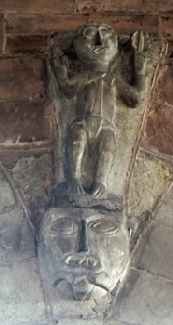 |
|||||||||||||||
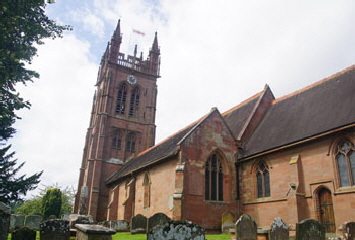 |
|||||||||||||||
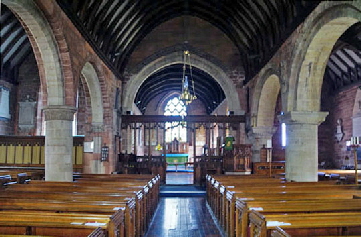 |
|||||||||||||||
 |
|||||||||||||||
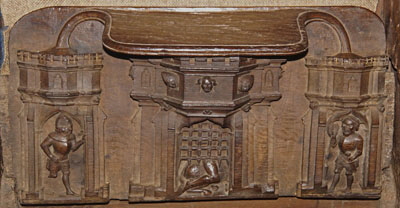 |
|||||||||||||||
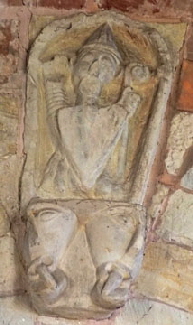 |
|||||||||||||||
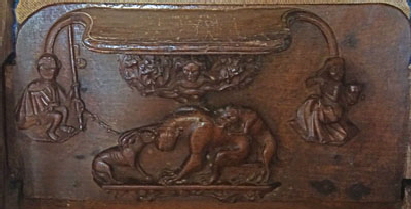 |
|||||||||||||||
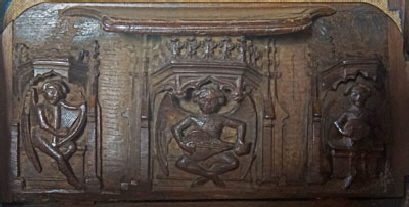 |
|||||||||||||||
|
|
|
Distance from Enville: 8 Miles North West |
|
There is an immediacy to wall painting that can cause you to catch your breath and which makes it unlikely to be overlooked by even the most casual of visitors. On my site there are already churches with breathtaking paintings and off national, if not international, significance. Sussex has three of the very best: Hardham, West Chiltington and Clayton each by the famed “Lewes School” of painters during the Norman period. Wall painting did not end at the Norman period, of course, but after something of a hiatus during the Early English period it re-emerged after the Great Plague of 1348 with a definite “Crime and Punishment” slant as the Church increasingly turned its attention to scaring parishioners to death with threats of hellfire and damnation. Claverley’s wall paintings are fit to rank with those of the Lewes School. Whereas the paintings at those three churches were narrative, however, Claverley’s were altogether different. We are presented on the north arcade with an uninterrupted mural of knights in combat that is compared with the style and content of the Bayeux Tapestry and I venture to suggest that the similarities will be lost on nobody. I will discuss the possible reasons for these astounding works on the gallery page (link below). The church is large and has a slightly eccentric plan. It was founded in 1094 by Roger de Montgomery and some of the original walls survive. The north aisle with its painting followed in the first half of the twelfth century. A tower was built later still in the Norman era, eccentrically inserted into the south wall of the church. The south arcade is Early English and gives us some nice (and for their era unusual) carved capitals. |
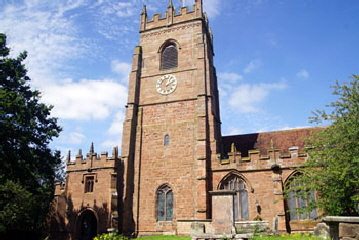 |
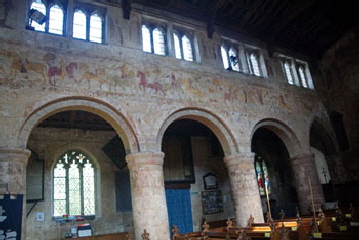 |
 |
||||||||||||||
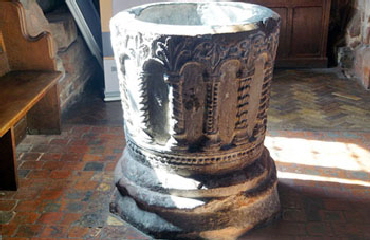 |
 |
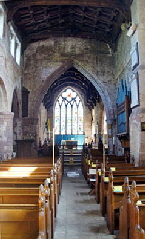 |
||||||||||||||
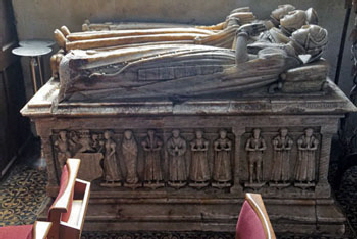 |
||||||||||||||||
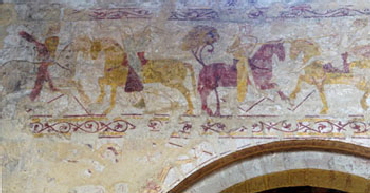 |
||||||||||||||||
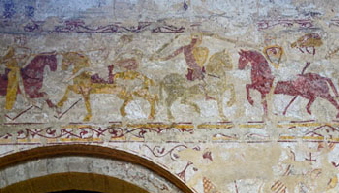 |
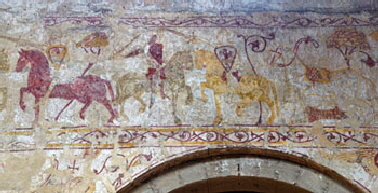 |
|||||||||||||||
|
|
|
Distance from Claverley: 10 Miles West |
|
Churches don’t come any simpler than Aston Eyre. It is a two-cell Norman structure with a bellcote rather than a tower. It was built on 1132 and still has four Norman windows in its nave. Curiously, its chancel arch with its pointed arch and its Norman style decorative courses is very clearly Transitional, so fifty or more years later than the nave. That suggests that the church was originally single-celled. Yet it also has a splendid tympanum, carved to a very high standard. This is the great treasure of this church. It depicts Christ entering Jerusalem on an ass, A man to his left has a young ass (should we say donkey?) while another man with a beard strews palms in front of Christ’s ass. Some claim that this is the work of the famed Herefordshire School and this was endorsed by no less authorities than Pevsner and Zarnecki but the attribution is disputed and Aston Eyre is not mentioned in Malcom Thurlby’s definitive treatise on the subject. I will talk more of this on the gallery page. Nevertheless, Pevsner reckoned it the finest Norman sculpture in Shropshire. The east end has a pretty arrangement of three “Norman” windows but they are nineteenth century. What was here before? We don’t really know but the other windows and doors of the chancel suggest an Early English lancet arrangement. |
 |
||||||||||||||||||||||||||||||||||||||||||||||
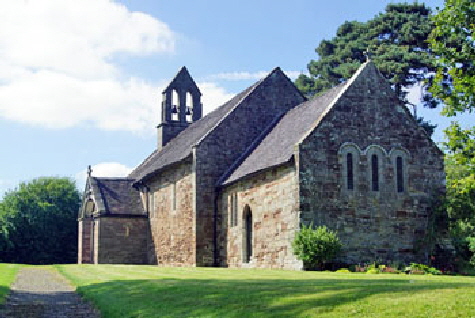 |
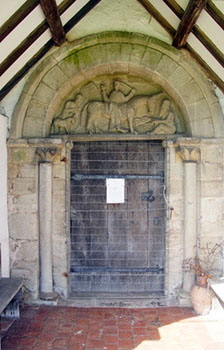 |
|||||||||||||||||||||||||||||||||||||||||||||
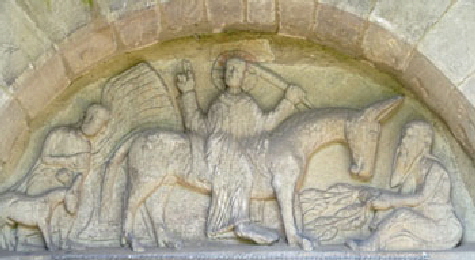 |
||||||||||||||||||||||||||||||||||||||||||||||
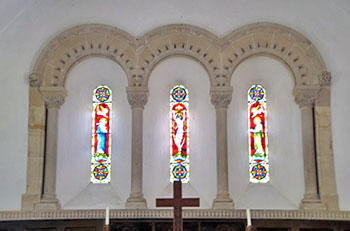 |
||||||||||||||||||||||||||||||||||||||||||||||
|
Holdgate (Shropshire) - Holy Trinity - Stage 4 |
||||||||||||||||||||||||||||||||||||||||||||||
|
Why I visited: Norman Font. Sheela-na-gig. Simon Jenkins: Excluded |
||||||||||||||||||||||||||||||||||||||||||||||
|
Distance from Aston Eyre: 8 Miles South West |
||||||||||||||||||||||||||||||||||||||||||||||
|
Holdgate Church was consecrated in 1119. The nave is probably from that date as it has a deeply splayed Norman west window. Also Norman is the fine south doorway which has three orders of decoration, one of which is a beakhead design, and capitals with geometric designs. Beakhead is generally believed to be a post 1130 decorative development which implies - we cannot be certain - that it post-dates the church’s foundation. The east end of the chancel has two simple pointed lancet windows in Early English style and surely of the thirteenth century. The broad pointed chancel arch is surely also from that phase. The base of the tower may be thirteenth century too. The church’s main treasure, however, its Norman font. It’s a very interesting one and nobody, it seems, has a clue what its designs might signify. There’s a serpent in there somewhere and some mightily mysterious geometric shapes. What can it mean? And then for the connoisseur of the profane and shocking - I know there are legions of you out there - there is what is widely believed to be a Sheela-na-gig. Shock, horror. It’s a very interesting little place is Holdgate Church with lots to intrigue the visitor. As with most of these churches, though, if you are looking for grandeur and architectural virtuosity you are likely to be disappointed. |
||||||||||||||||||||||||||||||||||||||||||||||
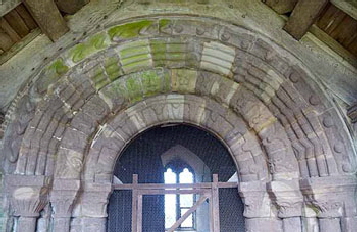 |
 |
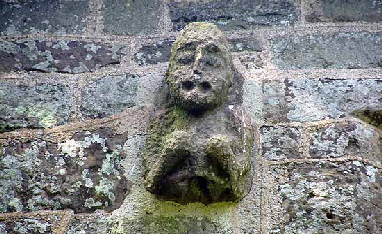 |
||||||||||||||||||||||||||||||||||||||||||||
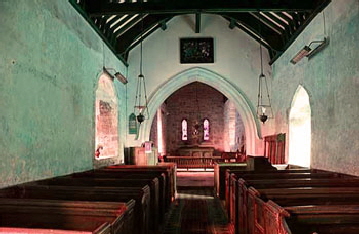 |
||||||||||||||||||||||||||||||||||||||||||||||
 |
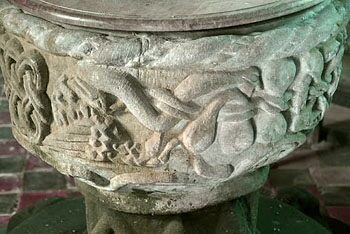 |
|||||||||||||||||||||||||||||||||||||||||||||
|
Stottesdon (Shropshire) - St Mary - Stage 5 |
||||||||||||||||||||||||||||||||||||||||||||||
|
Why I visited: Norman Font. Anglo-Saxon Tympanum. Simon Jenkins: Excluded |
||||||||||||||||||||||||||||||||||||||||||||||
|
Distance from Holdgate: 10 Miles South East |
||||||||||||||||||||||||||||||||||||||||||||||
|
Stottesdon Church is altogether on a grander scale than Holdgate or Aston Eyre and much more kempt (is there such a word?). Or less unkempt, if you like. And, yes it’s another Norman font. This Norman font, though, definitely is of the Herefordshire School. What is more, one of its decorative designs was recognised by Mary Curtis Webb as neo-Platonist in her book. It is a real beauty that will show you why the Herefordshire School carvings are very special. The earliest part of this church, however, is the west wall which is Anglo-Saxon. behind the west wall lurks an altogether-unexpected Anglo-Saxon doorway complete with carved lintel and crude tympanum and with a triangular head. This the original west door of the church is now hidden by the west tower which, apart from its top section and battlements, is early Norman. The nave has a Norman north arcade which is later than the tower - the Church Guide suggests 1190 - informing us that the arcade walls were the original outer walls of the church. The columns are quite modest in diameter and the capitals very modest in both dimension and decoration. The south aisle too is Norman as demonstrated by its Norman west window but its arcade was re-modelled tastefully but not altogether sympathetically in 1868. The north aisle is of its original Norman shallow width but the eastern end of the south aisle was widened in about 1340. The chancel is in the Decorated style and dates from 1330-40. |
||||||||||||||||||||||||||||||||||||||||||||||
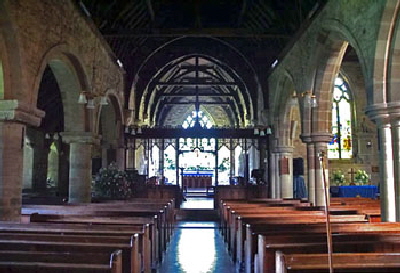 |
 |
|||||||||||||||||||||||||||||||||||||||||||||
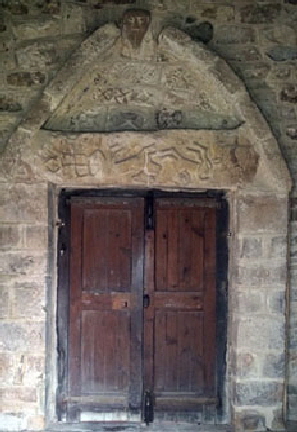 |
||||||||||||||||||||||||||||||||||||||||||||||
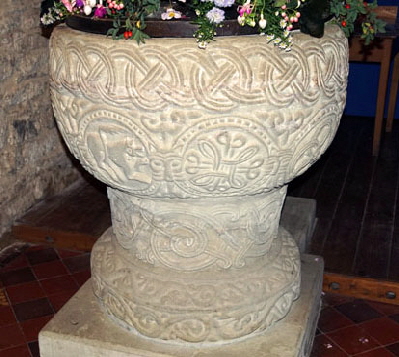 |
||||||||||||||||||||||||||||||||||||||||||||||
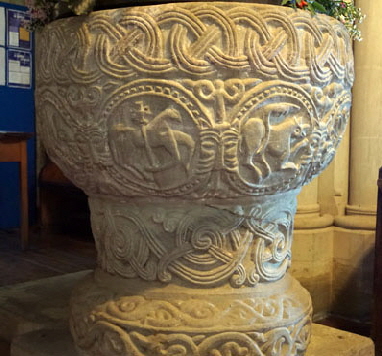 |
||||||||||||||||||||||||||||||||||||||||||||||
|
Click Here for the Part II of the “World’s Greatest Church Trail” |
||||||||||||||||||||||||||||||||||||||||||||||